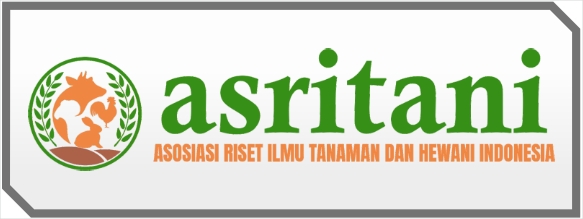Uji Karakteristik Briket Berbahan Baku Tempurung Kelapa dengan Perekat Tepung Kanji Berdasarkan Variasi Ukuran Partikel dan Dimensi
DOI:
https://doi.org/10.59581/jtpip-widyakarya.v1i3.937Keywords:
Briquettes, Dimensions, Particle SizeAbstract
The use of biomass as a renewable source for the development of bioenergy and biomaterials can also address the increasing needs of the community. Biomass is a more environmentally friendly alternative to oil and coal, which can replace non-renewable fuels. Biomass raw material with a high calorific value, is usually used as a mixing base or the main raw material in the manufacture of biobriquettes. The characteristics of briquettes made from coconut shell charcoal with starch adhesive are varied in dimensions and particle size of the charcoal. One of the adhesives that can be used to glue charcoal particles together to get compact briquettes is starch. This study aims to determine the effect of variations in the dimensions of charcoal and particle size used on the characteristics of briquettes made from coconut shell with starch adhesive. The method used was an experiment with Completely Randomized Design (CRD) testing three repetitions. The independent variables in this study were dimensional variations, namely cubes and pyramids, as well as variations in particle size using mesh 60, 80, and 100. The dependent variables in this study were the values of moisture content, ash content, destruction index, and heating value. From the results of testing a completely randomized design using ANOVA, it was found that the dimensions of the briquettes affected the ash content and flammability of the briquettes, while the particle size affected the moisture content, ash content, and flammability of the briquettes. Both dimensions and particle size have no effect on the briquette destruction index
References
Adkins, S. W., Foale, M., & Samosir, Y. M. S. (2006). Coconut revival: new possibilities for the ‘tree of life.’ Proceedings of the International Coconut Forum.
Ahmad, R. K., Anwar Sulaiman, S., Yusup, S., Sham Dol, S., Inayat, M., & Aminu Umar, H. (2022). Exploring the potential of coconut shell biomass for charcoal production. Ain Shams Engineering Journal, 13(1), 101499. https://doi.org/10.1016/j.asej.2021.05.013
AZOM. (2002). Particle Size - US Sieve Series and Tyler Mesh Size Equivalents.
Balasubramani, P., Anbumalar, V., Nagarajan, M. S., & Prabu, P. M. (2016). Biomass briquette manufacturing system model for environment. Journal of Alloys and Compounds, 686, 859–865. https://doi.org/10.1016/j.jallcom.2016.06.233
Diji, C. J. (2013). Electricity Production from Biomass in Nigeria: Options, Prospects and Challenges. Advanced Materials Research, 824, 444–450. https://doi.org/10.4028/www.scientific.net/AMR.824.444
Faizal, M., Rifky, A. D., & Sanjaya, I. (2014). Pembuatan Briket dari Campuran Limbah Plastik LDPE dan Kulit Buah Kapuk sebagai Alternatif. Jurna Teknik Kimia, 24(1), 45–54. https://doi.org/https://doi.org/10.36706/jtk.v24i1.184
Handra, N., Kasim, A., & Gunawarman. (2017). Effect of Particles Size on EFB Bio-briquettes of Calorific Value. Jurnal Teknik Mesin ITP, 7(1), 56–62.
Iriany, M., Firman, A., & Irvan. (2016). Pengaruh Perbandingan Massa Eceng Gondok dan Tempurung Kelapa serta Kadar Perekat Tapioka terhadap Karakteristik Briket. Jurnal Teknik Kimia USU, 5(1), 20–26.
Jannah, R. (2018). Pengaruh Jenis Perekat terhadap Nilai Kalor Briket Arang Tempurung Kawista (Limonia acidissima) Teraktivasi NaOH. Universitas Islam Negeri Maulana Malik Ibrahim Malang.
Pang, S. (2016). Fuel flexible gas production. In Fuel Flexible Energy Generation (pp. 241–269). Elsevier. https://doi.org/10.1016/B978-1-78242-378-2.00009-2
Pari, G., Mahfudin, & Jajuli. (2012). Teknologi Pembuatan Arang, Briket Arang dan Arang Aktif serta Pemanfaatannya. Badan Penelitian, Pengembangan dan Inovasi Kementerian Lingkungan Hidup dan Kehutanan Republik Indonesia.
Pratama, A. A., & Shadewa, D. (2018). Pengaruh Komposisi Bahan Dasar dan Variasi Jenis Perekat terhadap Nilai Kalor, Kadar Air, Kadar Abu pada Briket Campuran Sekam Padi dan Tempurung Kelapa. Publikasi Online Mahasiswa Teknik Mesin, 1(2), 1–10.
Rahmawati, S. (2013). Pemanfaatan Kulit Rambutan (Nephelium sp.) Untuk Bahan Pembuatan Briket Arang Sebagai Bahan Bakar Alternatif. Prosiding Simposium Nasional Inovasi Dan Pembelajaran Sains.
Sukowati, D., Yuwono, T. A., & Nurhayati, A. D. (2019). Analisis Perbandingan Kualitas Briket Arang Bonggol Jagung dengan Arang Daun Jati. PENDIPA Journal of Science Education, 3(3), 142–145. https://doi.org/10.33369/pendipa.3.3.142-145
Sulistyaningkarti, L. (2017). Pembuatan Briket Arang Dari Limbah Organik Tongkol Jagung Dengan Menggunakan Variasi Jenis Dan Persentase Perekat. JKPK : Jurnal Kimia Dan Pendidikan Kimia, 2(1), 43–53.
Tamado, D., Budi, E., Wirawan, R., Dwi, H., Tyaswuri, A., Sulistiyani, E., & Ama, E. (2013). Sifat Termal Karbon Aktif Berbahan Arang Tempurung Kelapa. Seminar Nasional Fisika.
Ye, S., Zeng, G., Wu, H., Liang, J., Zhang, C., Dai, J., Xiong, W., Song, B., Wu, S., & Yu, J. (2019). The effects of activated biochar addition on remediation efficiency of co-composting with contaminated wetland soil. Resources, Conservation and Recycling, 140, 278–285. https://doi.org/10.1016/j.resconrec.2018.10.004
Yuliah, Dzikri, M. A., Masri, Darmawan, E., & Yuliana, A. (2022). Utilization of Coconut Shells into Charcoal Briquettes as an Alternative Fuel. Indonesian Journal of Engagement, Community Services, Empowerment and Development, 2(2), 244–250.
Downloads
Published
How to Cite
Issue
Section
License
Copyright (c) 2023 Zuhri Diana, Mikhratunnisa Mikhratunnisa

This work is licensed under a Creative Commons Attribution-ShareAlike 4.0 International License.















